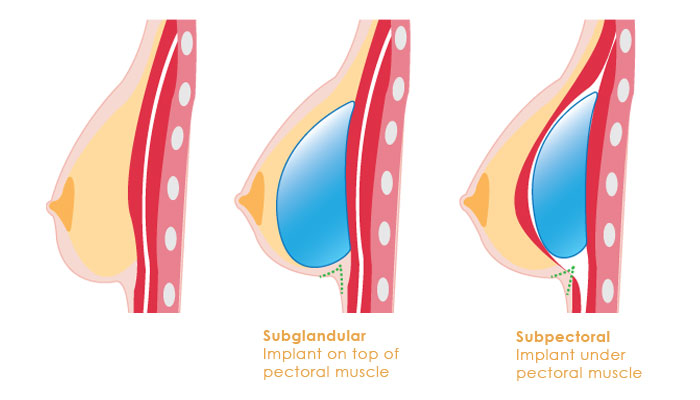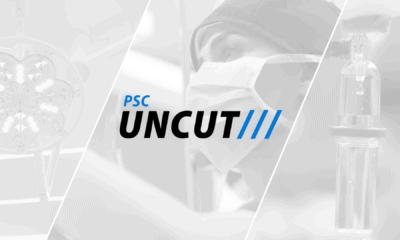People famous for being famous seems to be a budding occupation in modern times. Such a gig is all well and good, that is until these folks begin to posit theories as if they were the expert. One such famous famous-person, Becky Vardy, recently offered her followers advice on breast augmentation, claiming that breast implants “are like batteries” and need to be replaced every 10 years.
This is an oft-heard claim refuted by the best and most experienced plastic surgeons, across the board. The problem, like so many things in modernity, is a lack of nuance. Should breast implants be removed and replaced every 10 years? No. Should implants be replaced if there are issues with them? Yes.
Board certified plastic surgeons Dr. Anup Patel and Dr. Bruce Van Natta share their thoughts and provide nuance for patients and would-be patients to understand the full story.
Are Breast Implants Like Batteries?
The idea that breast implants need to be exchanged every 10 years is a gross oversimplification of what happens after a patient receives a breast augmentation. One thing is for certain – modern implants are engineered extremely precisely, thanks to decades of intense research and experience-derived insight from surgeons. Due to this, the implants themselves will last far longer than 10 years. There are of course potential outliers, but the vast majority of implants may never “break” after breast augmentation.
The problems that do and will arise surround how long the implants have been in, how they were implanted, and the sum of all bodily changes a patient may have undergone over the course of 10, 20, even 30 years. There is no hard answer for when implants need to be exchanged as their landscape of possible issues is vast, and very individual.
“I think there’s urban legend out there that you have to have your implants changed every 10 years,” shares Dr. Van Natta. “That must have been started by an under-employed plastic surgeon looking for some extra work. My feeling is, if it ain’t broke, why are we going to go fix it?”
Potential Issues that Lead to Implant Exchange
It’s worth reiterating that the many issues that may or may not develop following breast augmentation almost never have to do with the implants themselves. Bodily changes and how the implants were implanted are the source of the issues. One of the main issues is rippling, or when the implant becomes visible through the skin. This issue may arise after years of wear and tear on the body when the skin begins to thin. It also may have to do with implant positioning – whether the implant was placed above or below the pectoralis muscle.
“There are certain indications when you should get these implants checked and make sure that they’re alright,” shares Dr. Patel. “Rippling is a common problem. If someone places an implant that’s too big for the underlying skin, or sometimes if it’s placed subglandular position, you can see rippling.”
Subglandular vs. subpectoral implant placement is a debate that comes down to surgeon preference. Many of the best breast augmentation surgeons opt for subglandular when they can, while many others opt for subpectoral. “When I first started, that had been the norm – placing implants above,” explains Van Natta. “What happens over time is you get thinning of the tissues. In this story, she talks about having kids. Certainly that will stretch tissues. Breast implant surgery really comes down, at the end of the day, to soft tissue cover.”
Because a surgeon utilizes a subglandular placement does not guarantee that rippling will occur. The technique may or may not cause rippling (it may be the faster of the two to show rippling as skin thins over time), but ultimately patients should trust their surgeons to make the right decision for their unique body and situation.
Another of the most common causes of implant issues and the need for exchange is capsular contracture. The capsule that forms around any artificial implant may contract, causing the implant within to deform – an issue that can be very visible on the surface. Additionally, capsular contracture may cause the implanted breast to harden. This issue can only be resolved by implant exchange, or complete removal. “These are reasons to actually have your implants taken out and replaced as necessary,” shares Patel.
Vet and Trust Your Surgeon
Implants have been known to cause elusive mental quandaries in patients. I feel sick, is it because of the implants? I think my implant has ruptured and needs to be replaced. Something seems off, I think I need to replace my implants. These perplexing internal dialogues have sometimes led to breast implant removal to alleviate symptoms; whether or not this is placebo effect or otherwise is yet to be known. Regardless, patients should trust their surgeons to guide their thoughts and hesitations just as they trusted them in the operating room.
“If [the patient] has misconceptions, you have to point them out; there’s no point in going to the operating room if you don’t see it as a surgeon,” shares Dr. Patel. “It’s your job to educate the patient that there is no rippling and that she’s going under the knife for no reason and putting herself under risk of general anesthesia.”
Final word? Implants do not need to be replaced every 10 years. Implants may have to be replaced before 10 years, or they may last for 30. Check-ups with your surgeon are imperative to not only physically verify that everything is well, but to provide mental comfort that no, Becky Vardy is not accurate and your 12 year old implants are just fine!












Facebook
Twitter
Instagram
YouTube
RSS